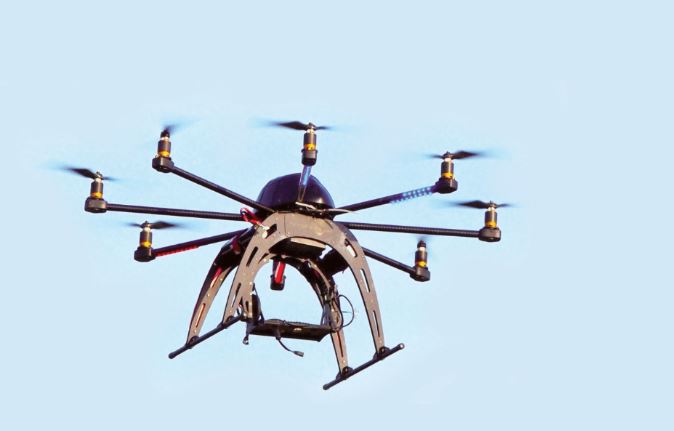Strict Norms Proposed for Civil Drones
AIBM
January - March 2018
On October 30, 2017, the Directorate General of Civil Aviation (DGCA) announced a move that indicates India’s positive approach in introducing drones, also known as Unmanned Aerial Vehicles (UAVs) or Remotely Piloted Aircraft System (RPAS), in the public space.
After years of embargo on the civilian usage of UAVs in India, the DGCA has finally resolved to a tentative structure of regulatory norms that aims to tap the opportunity of using drones in commercial and recreational spaces. However, the user has to fulfil requirements for the operation of civil remotely piloted aircraft systems (RPAS) laid down by the office of the DGCA. The Ministry of Civil Aviation (MoCA) in India along with the DGCA unveiled the draft and announced its intent to utilise the prospect of using drones abiding by a set of security measures that ensures the safety of other air vehicles and civilians on the land.
The Union Minister of Civil Aviation, Ashok Gajapathi Raju and the Minister of State for Civil Aviation Jayant Sinha, presented and briefed the media about the draft regulation in the beginning of November 2017. The civil aviation requirements for using the Unmanned Aerial Systems (UAS) and the drones have received new classifications and a long list of guidelines in terms of the controlled airspace, the payload, the remote pilot and the training of the remote pilots.
As per the draft regulation, all drones are proposed to be operated in visual line of sight, only during daytime and below 200 feet. Dropping of any substance, carriage of hazardous material or animal or human payload is not permitted.
All commercial categories of drones except those in the Nano category and those operated by government security agencies will have to be registered by DGCA as per International Civil Aviation Organization (ICAO) proposed policy, in the form of Unique Identification Number (UIN). The Mini and above categories will require Unmanned Aircraft Operator Permit (UAOP), but the model aircraft up to maximum take-off weight of two kilogrammes flown below 200 feet inside educational institution premises will not require UIN/UAOP. The draft regulation also mandates remote pilots to undergo requisite training, except for Nano and Micro categories. As per the draft regulation, the Micro and above category drones will have to be equipped with RFID/SIM, return to home option and anti-collision lights.
The draft regulation also specifies certain restricted areas for operation of drones. Drones cannot be operated within an area of five kilometres from an airport, within permanent or temporary Prohibited, Restricted and Danger Areas as notified by the Airports Authority of India (AAI) in Aeronautical Information Publication (AIP), without prior approval over densely populated areas, over or near an area affecting public safety where emergency operations are underway or within 50km from international borders and beyond 500m (horizontal) into sea along the coastline. Drones cannot be operated within a five kilometres radius from Vijay Chowk in Delhi and from a mobile platform such as a moving vehicle, ship or aircraft.
The Secretary of MoCA R N Choubey informed that the draft for Civil Aviation Requirement (CAR) on UAS is available on MoCA’s website for a period of one month and invited the general public to send in their suggestions and comments on the draft.
UAS Challenges Unlike US
The debate lingering on the acceptance of this technological revolution in India’s everyday life is not a new story. However, to keep a balance between unseen security concerns and a positive outlook towards a theory that the world has slowly embraced, an appropriate set of regulatory decrees with meticulous policies was the demand against the erstwhile legal ban on using drones in India.
Several other countries have allowed the use of drones. The United States of America (US) announced its rules in June 2016 and a number of African nations such as Kenya, Rwanda and Malawi have been using the technology to ferry HIV or other medical tests, deliver medicine or blood during disasters or epidemics and even combat sensitive areas and activities like poaching.
However, for a densely populated country like India the challenges of bringing civil drones in regular use are quite different from the US. Politically, socially and geographically different than the US, India’s policies should keep the basic safety interest of its civilians. Perils such as unscrupulous terrorist activities are also cited as major concerns by aviation experts on various occasions whenever the discussion of UAS comes up.
However, the 2016 report by the Teal Group, a US-based defence consultancy tracking the UAV industry for more than a decade finds a stark increase in the civil employment of UAVs post 2015. Barring the military production of UAS, civilian use and thus the production is estimated to increase from USD 2.6 billion worldwide in 2016 to USD 10.9 billion in 2025, a 15.4 percent compound annual growth rate. The construction sector is projected to lead the market for commercial use of drones, followed by agriculture.
In India, there is an immense opportunity in the retail market and the MoCA has realised that over the years pertaining to repeated requests coming from the ecommerce giants such as Flipkart. In the US, Amazon made its first public drone delivery in March this year and has now procured a patent application in October that will allow drone deliveries in certain areas of India as well.
After the regulations come into effect and the licensing process of unmanned forces are kept without loopholes, the Indian civil airspace is set to see a lot of flying objects carrying out work seamlessly and accurately. From providing faster and cheaper land surveying solutions to a faster pizza delivery avoiding the busy traffic; use of drones is expected to pick up pace in India.










